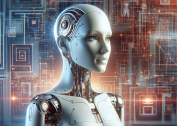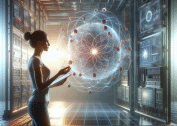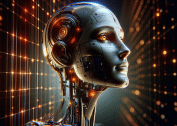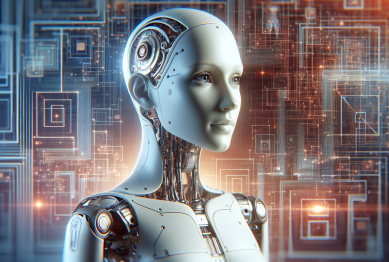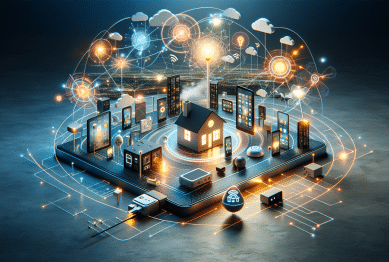Discover how artificial intelligence tools are transforming science tasks and daily tech routines. Explore AI-powered innovations, data analysis breakthroughs, and practical examples that reveal how accessible technology is shaping the future of everyday life.
The Rise of Artificial Intelligence in Science
Artificial intelligence (AI) has rapidly become one of the most influential forces in science and technology. Its algorithms, which process massive amounts of data, are being used to identify patterns that humans might overlook. The deployment of AI in fields such as biology, chemistry, and physics has reshaped how researchers approach complex problems. Today, AI and machine learning solutions are used to model climate changes, unravel patterns in genetic data, and push the boundaries of physics simulations. This technology is no longer just for researchers—it’s finding practical value in day-to-day applications, changing what’s possible for people everywhere.
A remarkable element of AI in the scientific community is its speed. Traditional approaches to scientific inquiry could take years to achieve breakthroughs, but AI accelerates discovery by quickly sorting through terabytes of information. For example, computer vision systems powered by deep learning models can automatically classify microscopic images, identify anomalies in astronomical data, and even simulate chemical reactions. These advances, paired with robust data analytics, allow scientists to generate more accurate predictions and derive fresh insights, illustrating why AI continues to be a magnet for tech investment and research funding.
Importantly, the influence of AI in scientific domains isn’t limited to the big laboratories. AI tools now power everyday science tasks at home, from smart weather apps to virtual assistants filtering factual information. Students, hobbyists, and professionals alike leverage AI-driven platforms for everything from data crunching to personalized educational content. This democratization of advanced technology signals a shift: artificial intelligence is no longer just a niche for specialists, but a broadly accessible utility that can inspire curiosity and innovation in ordinary routines.
How AI Simplifies Data Analysis for Everyone
Data analysis, once a domain for trained statisticians, has been radically simplified by AI. Accessible machine learning systems can now process vast datasets, organize findings, and visualize trends with minimal manual input. These AI-powered platforms are regularly used in fields like genomics and environmental science, where the sheer scale of data would overwhelm traditional methods. Automated tools recommend hypotheses, visualize correlations, and even flag unusual events in real time. This combination of speed and accessibility helps even those without specialized knowledge to uncover meaningful trends and inform their projects with cutting-edge insights.
Educational institutions and citizen science projects have embraced user-friendly AI tools so volunteers, students, and non-experts can participate meaningfully. Popular platforms offer intuitive dashboards, guided workflows, and adaptable templates for custom data analysis. As a result, participants can explore datasets, clean noisy information, and identify patterns concerning climate change, wildlife, and public health reporting. In short, you don’t have to be a data scientist to use advanced analytics—AI bridges this gap with logic and interactive features, empowering more people to contribute and learn.
Natural language processing also features prominently among today’s accessible AI solutions. These systems interpret research abstracts, summarize news articles, and answer technical queries with impressive precision. Companies and academic groups rely on such innovations to monitor emerging topics, check for anomalies, and automate tedious information-gathering processes. By combining statistical rigor with conversational interfaces, AI ensures that advanced analysis doesn’t remain locked behind complex code or jargon. Instead, discoveries and new insights become part of daily routines for a growing number of users.
Popular AI-Powered Tools Making Science Easier
Many AI-powered tools have gained widespread use for simplifying science-related tasks. Platforms like TensorFlow, developed by Google, and open-source solutions such as Scikit-learn bring machine learning to the mainstream. These frameworks are the backbone of applications ranging from image recognition to disease outbreak prediction. By providing modular libraries and streamlined workflows, they allow scientists and tech enthusiasts to experiment without building algorithms from scratch. This ease of use opens the door for more creative experimentation in both academic settings and personal projects.
Voice-activated digital assistants such as Alexa and Google Assistant integrate basic AI research to turn spoken requests into actionable results. With these systems, it’s simple to set reminders for lab tasks, search scientific literature, or translate technical terms, all hands-free. Meanwhile, AI-based language models assist with writing summaries or drafting technical communications, bridging gaps between subject matter experts and general audiences. These innovations reflect how practical, everyday tools continue to evolve rapidly with each year’s advances in neural networks and computational linguistics.
Computer vision is another area where AI-driven applications shine. Whether helping astronomers spot distant galaxies or supporting biologists with species identification from photos, these tools learn from datasets and quickly apply that knowledge to new information. For example, citizen scientists can upload smartphone snaps to an app, which uses AI to recognize birds or plants in seconds. The consistent improvement of these technologies shows the field’s momentum—AI’s role in supporting scientific exploration at every level keeps expanding.
Artificial Intelligence and Home-Based Science Projects
Home-based science projects increasingly benefit from affordable, AI-powered solutions. Everyday users can access open datasets and analytical resources originally designed for research professionals. For instance, platforms such as IBM Watson and Microsoft Azure AI offer cloud-based services where users can run models and visualize scientific phenomena. This makes complex experiments and data interpretation accessible to students, hobbyists, and educators. Simple experiments—such as analyzing weather data or monitoring water quality—can now be supplemented by sophisticated AI analytics previously reserved for specialized labs.
3D modeling and simulation tools, aided by AI, are also enhancing STEM learning at home. Interactive simulations help demystify principles of physics, chemistry, and engineering. As a result, learning is more engaging, with visual, real-time feedback replacing static textbook content. Free or low-cost educational software incorporates AI-driven recommender systems to adapt lessons based on individual performance, promoting personalized learning progress. These interactive AI tools are changing perceptions of how science can be practiced and understood at any age.
Home labs have become more efficient as AI applications automate tedious measurements, log data, and even alert users about important test results. Smart sensors and programmable devices, easily available through online marketplaces, pair with AI apps to collect, sort, and analyze information. This practical integration of technology fosters curiosity and builds confidence in experimental design, laying the foundation for a new generation of innovators and thinkers. The result: AI not only streamlines complex tasks, but also inspires more people to participate in scientific exploration from their living rooms or garages.
Ethical Considerations and Human Judgment in AI Science
With AI’s widespread adoption in scientific endeavors, ethical questions and issues of human judgment become more prominent. While tools like facial recognition and automated decision-making offer valuable efficiencies, they also invite scrutiny about bias, transparency, and accountability. Bias can emerge in training data or be inadvertently introduced by developers, potentially affecting decision quality or reinforcing existing inequalities. Ensuring responsible AI usage is therefore vital, especially as these systems increasingly influence medical diagnostics, judicial analysis, or resource allocation.
Transparency is another core concern. Users must understand how AI algorithms arrive at conclusions in order to trust and act upon their recommendations. Many organizations are working to create ethical frameworks and standards for AI development. These include guidelines on data collection, user privacy protections, and regular audit requirements for automated systems. Such efforts help to create trust, encourage broader adoption, and mitigate risks intrinsic to artificial intelligence deployment.
Despite advanced automation, human oversight remains indispensable. AI tools handle repetitive or high-volume tasks with efficiency, but nuanced problem solving and critical thinking still depend on people. Collaborative efforts, where AI augments rather than replaces human intelligence, yield better research outcomes. Ongoing education about AI’s strengths and limitations is essential, ensuring users can leverage these technologies effectively and responsibly while maintaining scientific rigor and ethical standards in decision-making.
What’s Next for AI in Everyday Science?
The pace of AI innovation shows no sign of slowing. Researchers are exploring self-learning algorithms, edge-AI devices, and quantum computing, each with the potential to further transform how science is done. Future advancements could see personalized AI tutors, real-time language translation for scientific collaboration, and even AI-mediated experiments on remote sensors or drones. As these technologies become mainstream, the line between professional research and everyday use will blur even further, bringing new opportunities for engagement in science and technology.
Accessible AI could foster stronger connections between the scientific community and the public, stimulating interest in STEM careers and enhancing scientific literacy. Integration with open science initiatives ensures that data, software, and results are more widely available so that discoveries can be validated, built upon, and adapted for diverse needs. Global challenges—such as climate change, pandemics, or clean energy—will increasingly depend on the ability to harness AI-driven insights at scale.
In the short term, users can expect continued improvements in accuracy, speed, and transparency. As AI-powered platforms adapt to new fields and users, the range of supported activities will expand. Everyday science will remain at the heart of these changes, bringing technical advances into the hands of more people and inspiring further exploration. It’s an exciting era where learning, discovery, and creativity are powered by smart machines that work alongside us.
References
1. National Science Foundation. (2023). The Growing Role of AI in Science and Technology. Retrieved from https://www.nsf.gov/news/special_reports/science_nation/artificialintelligence.jsp
2. European Commission. (2023). Artificial Intelligence for Science. Retrieved from https://ec.europa.eu/info/research-and-innovation/research-area/artificial-intelligence
3. MIT News. (2022). Tools and Applications: AI in Everyday Life. Retrieved from https://news.mit.edu/topic/artificial-intelligence
4. Carnegie Mellon University. (2023). AI for Science Initiative. Retrieved from https://www.cmu.edu/ai/ai-for-science
5. IBM Research. (2022). How AI is changing scientific discovery. Retrieved from https://www.ibm.com/research/blog/ai-scientific-discovery/
6. Stanford University. (2023). The Ethics of Artificial Intelligence in Science. Retrieved from https://hai.stanford.edu/research/ai-ethics

